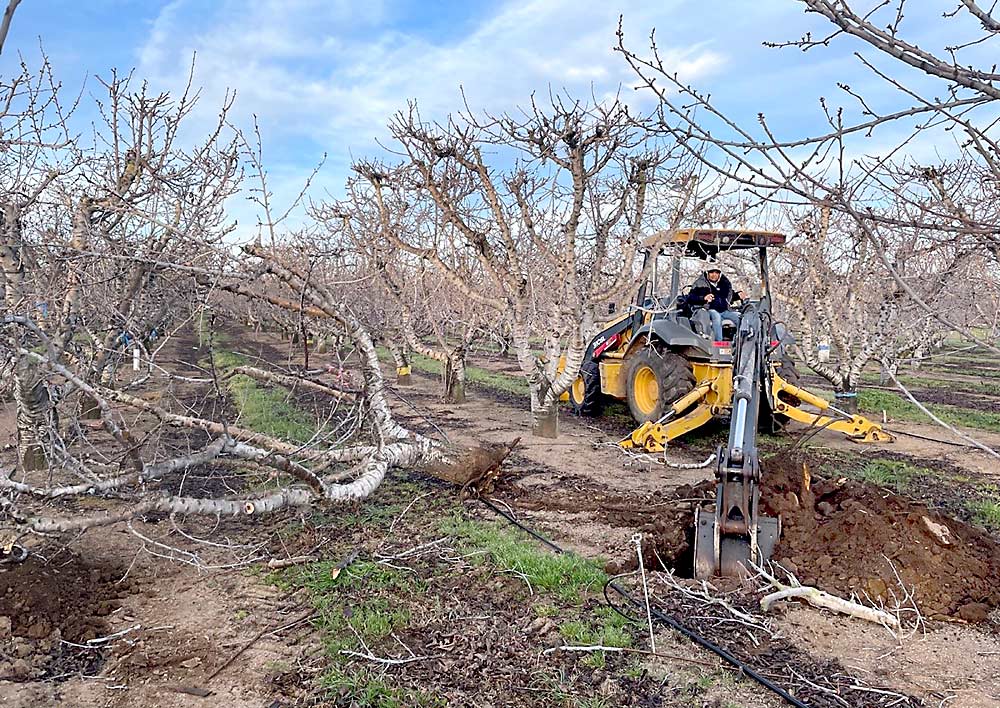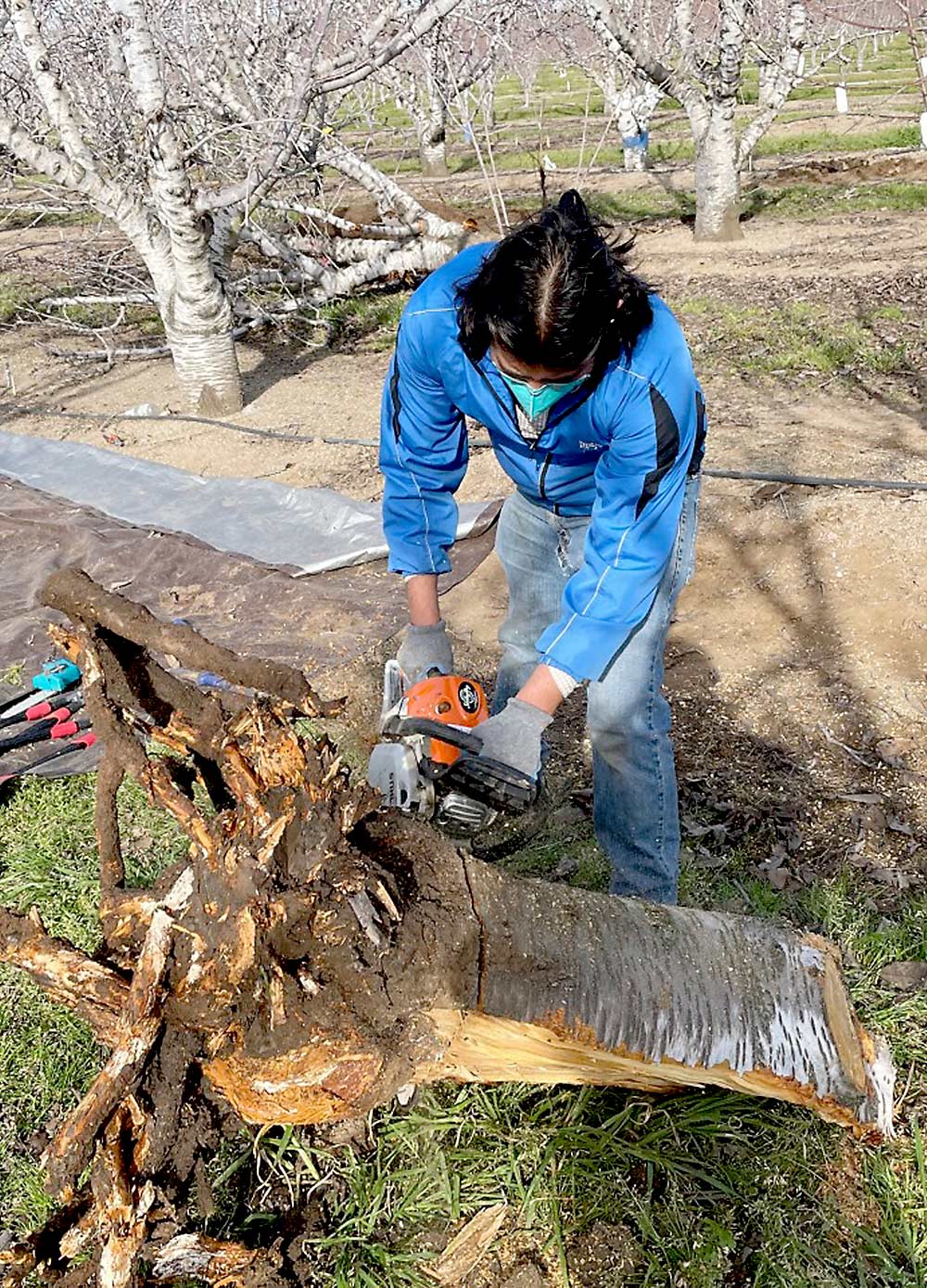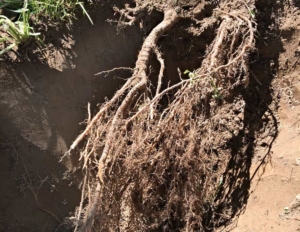
As regulators in California have increasingly monitored groundwater for nitrates and other pollution, cherry growers have begun studying their trees’ needs more closely.
To get in front of those regulators, the California Cherry Board funded a research project about nutrient uptake.
“We all were concerned they were going to tell us how much nitrogen we needed, instead of the other way around,” said Paul Wolf, who manages his family’s orchard in Linden, about 15 miles east of Stockton in California’s Central Valley.
The goal is to build web-based models for the nutritional demands of cherry trees based on climate, soils, location, crop development stage and variety, so growers can demonstrate they are giving their trees what they need, when they need it, and nothing extra that might leach into groundwater.
Doug Amaral, a University of California Cooperative Extension specialist, is leading the $250,000 project. The California Department of Food and Agriculture contributed $150,000, the cherry board $100,000.
Amaral’s team uses methods both minute and grand in commercial orchards collaborating near Stockton.
California cherries grow throughout the vast Central Valley, from Sacramento to Bakersfield, but Stockton, Lodi and the rest of San Joaquin County sit at the heart of the industry. California growers produced 59,000 tons of fresh sweet cherries in 2020, second in the nation behind Washington at 164,000 tons, according to the U.S. Department of Agriculture. Oregon was third at 43,000 tons. California cherries ripen and ship earlier than cherries in the Northwest, creating a continuous market window.
Each year, he and his crews analyze samples of soil, irrigation and tree tissue at the roots, trunk, scaffolding and canopy. Also, they excavate three entire trees — one each of Bing, Coral and Rainier — and cut them up to measure biomass and pinpoint where nutrients have traveled.
“You want to know where the nutrients are,” Amaral said.
Currently, growers use leaf analysis that only indicates whether a tree has a deficiency or sufficiency of nutrients, and it’s typically performed too late to respond to problems, Amaral said. Meanwhile, soil samples indicate the presence of nutrients but not whether the tree is getting them. The model will give growers a way to predict what their trees need and when, so they can plan their applications budget-style.
So far, he has not come to any conclusions to share. His three-year project will continue for two more years.
California’s nut farmers are further ahead on answering these questions than cherry growers, a smaller industry in the state, Amaral said. He also recently performed a similar project for the California citrus industry.

Nitrogen concerns
Amaral’s analysis seeks details about all nutrients, but nitrogen concerns motivated the work, said Wolf, a member of the California Cherry Board’s research committee, which recommends projects for funding.
Nitrogen, a naturally occurring essential element common in agricultural fertilizers and dairy manure, combines with oxygen to produce nitrate. Too much nitrate in drinking water can reduce human blood’s ability to carry oxygen, especially for infants and pregnant women. Excess agricultural nitrate will either run off to contaminate surface water or leach into groundwater and pollute rural wells if plant roots don’t wick it up.
The state of California has governed water pollutants from farming since a 1967 legislative mandate through nine regional water boards, but regulators added groundwater to the mix in 2012. They require strict nitrate management plans, monitoring and reporting from anyone farming commercially in the Central Valley.
“They want to know every ounce of nitrogen,” said Wolf, who also grows apples and walnuts on his family’s 330-acre farm.
Nutrient management studies are overdue, said Scott Brown, production manager for Morada Produce in Stockton and chair of the research committee. For the past 10 years or more, research attention and funding has been consumed by management of the spotted wing drosophila, or SWD.
“Rightfully so, it’s a scourge on the industry,” Brown said.
More recently, Wolf, Brown and other industry officials have renewed interest in funding scientific guidance about irrigation, nutrient management and dormancy-breaking agents.
“Those are three line items that might have been put on the back burner when so much of our research dollars went to SWD,” Brown said.
—by Ross Courtney







Leave A Comment